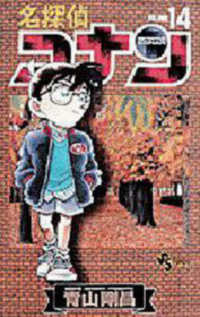Description
Children and young people are often discussed as if they are homogenous groups. The reality is, of course, very different, with an enormous variation within each of these groups and in any domain of experience pertaining to childhood or adolescence. Driven by personal, sociocultural, geographic, or economic circumstances, many children and young people worldwide are experiencing a totally different reality to those who fit with more mainstream patterns of childhood. This has substantial implications for their sociophysical environmental experience and our understanding of their physical environmental needs. The aim of this book is to draw attention to these alternate realities for a number of these groups of children and young people, highlighting the unique and different considerations associated with their particular circumstances in each instance, and identifying the repercussions for their physical environmental needs. Ultimately, this book creates an evidence-based discussion which can be used by designers, planners and policy makers, and those delivering services and programs to children and young people as a basis to make informed decisions on how to work with the groups of children and young people in our book for better environmental provision.
Table of Contents
Introduction Part I: Framing the Conversation 1. Global Challenges and Trends Affecting All Children and Young People and Their Environmental Experience 2. Conceptualizing Challenging Childhoods: Contemporary Models and Frameworks for Addressing Vulnerability 3. Environmental Considerations for Children and Young People with Diverse Childhood Experiences: Current Conversations in Research Part II: Meeting Children’s and Young People’s Rights and Supporting their Agency in the Built Environment 4. Reimagining Urban Liminal Spaces as Children’s Places to Secure Children’s Right to the City and Fulfil Rights of Children 5. “Flying for the First Time”: Situating Sustainability-in-Place among Children and Young People within Agricultural Communities of California 6. Dispossession, Adolescence and the Missing Public Spaces of Hyderabad, India Part III. Indigenous Children and Young People 7. Aboriginal Australian Children’s Cross-Cultural Behaviors and Experiences: An Ecological Psychology Perspective 8. Nature or Environment? Experiences, Feelings and Opinions of Children from Indigenous Peoples 9. Ecological Place-Meaning of a Rural Island Environment through the Lens of Young Bajau Ubian in Sabah, Malaysia 10. Cultivating my Culture: Educational Gardens as Places for Biocultural Revitalization in Early Childhood Education in an Indigenous Territory of Southern Chile 11. Indigenous Children’s Speculative Future Imaginaries of Place, Weathering and Ruination Part IV: Children and Young People with a Disability 12. Having a Say in Places to Play: Children with Disabilities, Voice and Participation 13. Equitable Outdoor Play Design for Children and Families with Disabilities 14. Learning Environments for Students with Moderate and High Support Needs: Listening to Student Voices 15. Sensemaking: The Environmental Experiences of Children with Disabilities in Primary School 16. Excavating Solutions to Sociospatial-Textual Injustices with Girls of Color with Disabilities in Middle School and High school in the United States Part V: Vulnerable Children and Young People 17. Supporting Young People with Vulnerabilities through the Provision of Quality Youth Center Environments 18. Uses, Meanings and Positioning of Children and Young People in the Urban Environment: The Case of an Informal Settlement in Bogotá, Colombia 19. Nature-Based Healing Environments Improve Critical Protective Factors Associated with Long-Term Recovery from Trauma, Addiction and Homelessness for Young People 20. Barriers to Wellbeing at School: Listening to the Environmental Experience of Young Girls in Bangladesh Part VI: Young People in the Justice System 21. Abolishing Youth Detention Centers: Rethinking Architectural Models for Australian Children and Young People Under Legal Custodial Orders 22. Keeping Kids Close: Can Juvenile Justice Detention be a Place of Healing? 23. Youth Detention and Correctional Facilities in the US Part VII: Refugees, Immigrants and Displaced Children and Young People 24. Healthy Environments for Refugee and Asylum-Seeking Children and Young People: A Biopsychosocial Lens 25. Institutional Logics and Children’s Participation: A Case Study of Artolution’s Public Art Projects in Internally Displaced Person (IDP) and Refugee Settlements 26. Immigration Detention Environments in Australia: Children’s Rights and Wellbeing Conclusion








